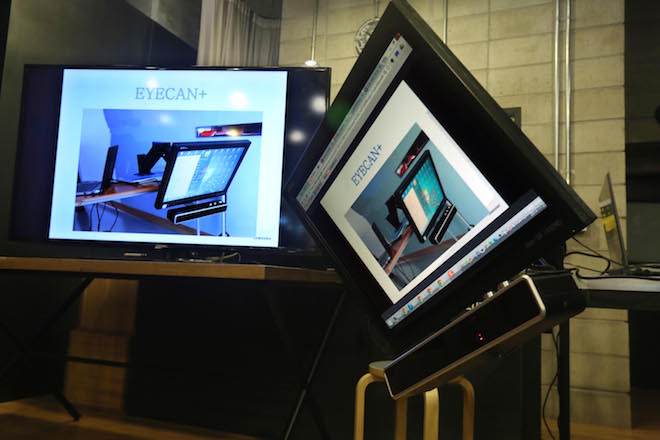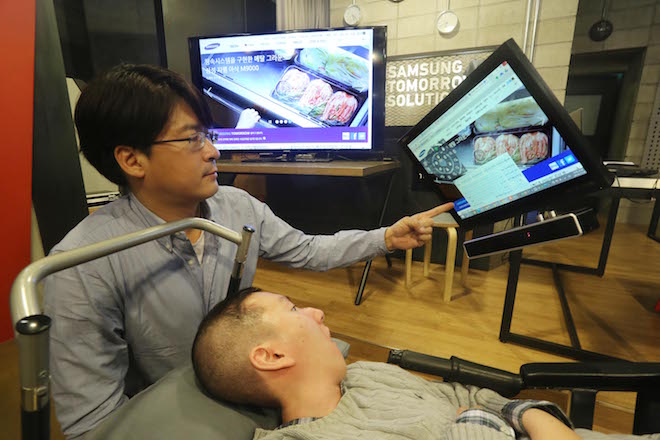 Prague, November 26, 2014 – Samsung Electronics, Co., Ltd., introduces a second-generation computer mouse called EYECAN+. It will allow people with disabilities to create and edit documents as well as view web pages with a simple eye movement. EYECAN+ is the first device of its kind that from users requires no additional tools including glasses. It is a separate unit in the form of a portable module that is placed under the monitor and works on the base wireless calibration with the user's eye.
Prague, November 26, 2014 – Samsung Electronics, Co., Ltd., introduces a second-generation computer mouse called EYECAN+. It will allow people with disabilities to create and edit documents as well as view web pages with a simple eye movement. EYECAN+ is the first device of its kind that from users requires no additional tools including glasses. It is a separate unit in the form of a portable module that is placed under the monitor and works on the base wireless calibration with the user's eye.
EYECAN+ will not be subject to commercial production. Samsung will produce a limited quantity that it will donate to charities. However, both the EYECAN+ technology and design will soon be freely available to companies and associations planning to market eye-controlled computer mice. "EYECAN+ is the result of a voluntary project initiated by our engineers. It reflects their empathy and effort to help people with disabilities." said SiJeong Cho, Vice President of Community Relations at Samsung Electronics.
To control the EYECAN+ mouse cursor, the user needs to be between 60 and 70 cm from the monitor. It does not require him to be in a specific position because can be operated sitting or lying down. Calibration is only needed for each user's first use. EYECAN+ then automatically remembers their behavior and eye movements. It allows you to set the sensitivity of the sensor both for calibration and for subsequent use. After calibration, the EYECAN+ user interface appears as a pop-up menu in one of the two different modes: rectangular menu or floating circular menu. Both can be configured to remain in the foreground of the screen.

var sklikData = { elm: "sklikReklama_47926", zoneId: 47926, w: 600, h: 190 };
The menu includes 18 different commands, which is selected only by eye movement and blinking. Executing a command is done by looking directly at the relevant icon with a single blink - these include 'copy', 'paste' and 'select all', as well as 'drag', 'scroll' and 'zoom'. EYECAN+ allows you to create custom additional commands corresponding to existing keyboard shortcuts, such as "close program" (Alt + F4) and "print" (Ctrl + P).
Compared to its predecessor, the EYECAN eye mouse that Samsung introduced in March 2012, EYECAN+ now has significant improvements in calibration sensitivity and overall user experience (UX). Thanks in part to a computer science graduate student at Yonsei University in Seoul named Hyung-Jin Shin. Although he was born paralyzed, he worked with Samsung in 2011-2012 to develop EYECAN and took a key role in the development of EYECAN+ UX by controlling the mouse with his eyes. During 17 months of intensive work with Samsung engineers, they achieved together that the extension offered a whole range of additional practical functions and commands that are easily accessible and manageable for people with disabilities.

var sklikData = { elm: "sklikReklama_47925", zoneId: 47925, w: 600, h: 190 };